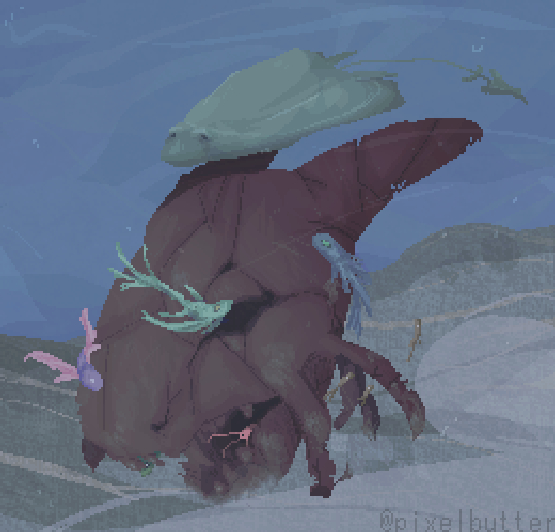Most Lapexes are taught to respect the waters and oceanlife, obviously, not all Lapexes listen to their elders, but this is common culture shared with most Lapexes that live in communities.
Ancient Lapexes
Lapexes live for long periods of time, and it isn't exactly determined how long they actually live, as most of the time, their lives are cut short due to predators, unfortunate situations, illnesses or natural disasters. The oldest recorded lapexe is over 11 centuries old - that's 1,100 years!
Lapexes that are over 700 years old are called Ancient Lapexes - the older the Lapexe is, the bigger it gets, and Ancient Lapexes are usually so large (700 year old lapexes are almost the size of blue whales) that they are usually unable to go on land, since they can only support their weight in water and not on land - a majority of Ancient Lapexes have barnacles and seaweed growing on them, and some even have coral reefs and other aquatic plantlife growing on its body. Ancient Lapexes are generally looked up to as major supporters and bringers of life, though a majority of the known Ancient Lapexes have kept themselves in isolation.
Death
Upon death, Lapexe's bodies become a part of their environment, soft parts like their tails, eyes and tongue decay into the water - their bodies harden and seem to become stone-like, and their remnants (that resemble what they looked like) become a shelter and nourishment for aquatic life.

Because of how Lapexes die, statues are treated with the utmost respect. Some Lapexes even believe that statues are made to carry the soul of whomever the statue is about, so when they die, their soul has a place to rest.
Lapexe's bodies are generally not messed with after they die unless they die outside of water, which they are usually brought into water (unless the Lapexe had made it clear that they do not wish to go to the sea upon death).